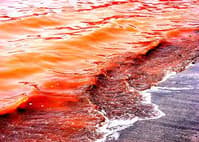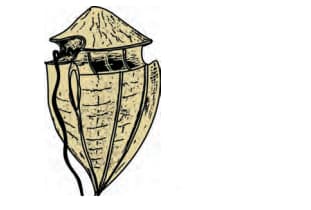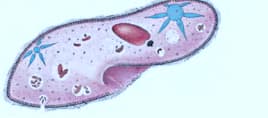Kingdom Protista
Kingdom Protista: Overview
This Topic covers sub-topics such as Protozoa, Diatoms, Dinoflagellates, Kingdom Protista, Slime Moulds, Chrysophytes, Sporozoans, Ciliated Protozoans, Euglenophyta, Photosynthetic Protists, Flagellated Protozoa and, Amoeboid Protozoa
Important Questions on Kingdom Protista
Write a brief account on Chrysophytes.
Choose the incorrect match from the following.
What are the fruiting bodies in slime moulds?
What kind of reproduction does a slime mould use?
Moulds can grow on
I. Pickles and fruits
Il. Leather and clothes
Ill. Dead and decaying matter
IV. Wall and Ceilings
Write the characteristic of dinofllagellates.
Given below is the image of red tide.

Red tides in warm coastal water develop due to the abundance of:


These two organisms belong to which kingdom?
When a freshwater protozoan possessing a contractile vacuole, is placed in a glass containing marine water, the vacuole will
Match the locomotory organs given under Column I with phylum they are seen listed under Column II. Choose the answer which gives the correct combination of alphabets of the two columns.
| Column I | Column II |
| A. Pseudopodia | 1. Mollusca |
| B. Parapodia | 2. Chondrichthyes |
| C. Muscular foot | 3. Protozoa |
| D. Fins | 4. Annelida |
Which one of the following does not belong to Kingdom Monera?
Match the term in Column I with the scientist in Column II; choose the answer which gives the correct combination of the two columns:
| Column I (Term) | Column II (Scientist) |
| A. Prokaryote | 1. Felix d' Herelle |
| B. Protista | 2. Edouard Chatton |
| C. Bacteriophage | 3. Theophrastus |
| D. Lichen | 4. Ernst Haeckel |
Naked cytoplasm, multinucleated and saprophytic are the characteristics of
All eukaryotic unicellular organisms belong to
Fill in the blank with the correct option provided in the bracket.
_____(Euglena/Paramecium/Planaria) is a unicellular organism having certain features of animals and certain features of plants.
The active form of Entamoeba histolytica feeds on
During conjugation in Paramecium,
Which of the following unicellular organism has a macronucleus for trophic function and one or more micronuclei for reproduction?
